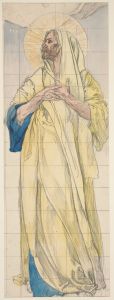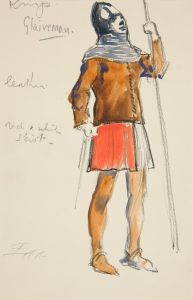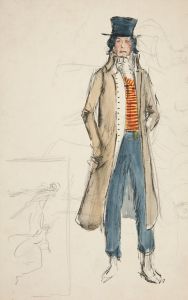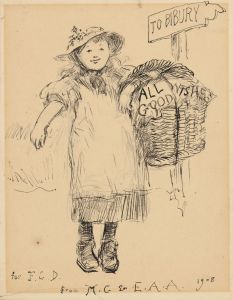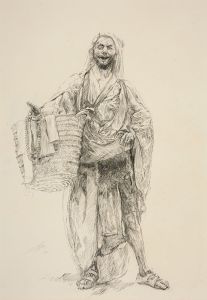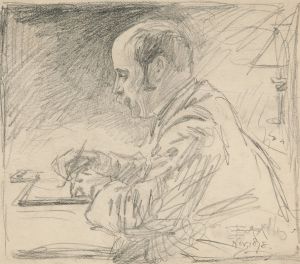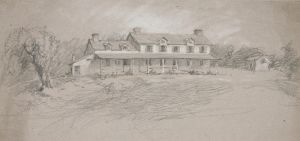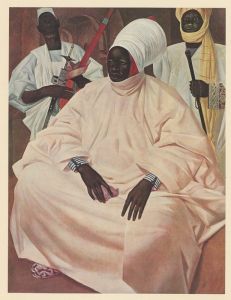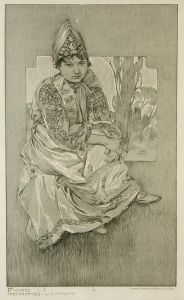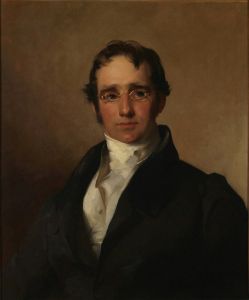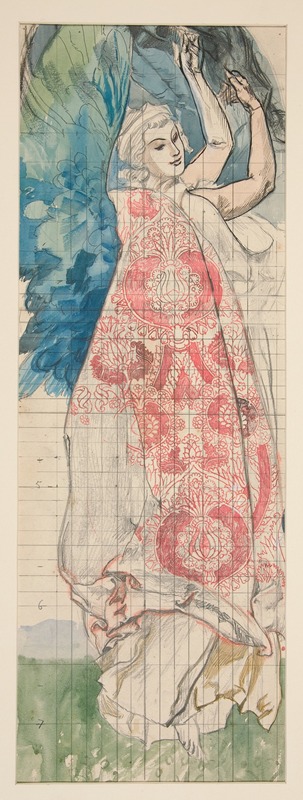
Study for Louis Comfort Tiffany’s center window for ‘Children’s Window’, St. Peter’s Church, Morristown, NJ
A hand-painted replica of Edwin Austin Abbey’s masterpiece Study for Louis Comfort Tiffany’s center window for ‘Children’s Window’, St. Peter’s Church, Morristown, NJ, meticulously crafted by professional artists to capture the true essence of the original. Each piece is created with museum-quality canvas and rare mineral pigments, carefully painted by experienced artists with delicate brushstrokes and rich, layered colors to perfectly recreate the texture of the original artwork. Unlike machine-printed reproductions, this hand-painted version brings the painting to life, infused with the artist’s emotions and skill in every stroke. Whether for personal collection or home decoration, it instantly elevates the artistic atmosphere of any space.
Edwin Austin Abbey, an American artist known for his murals and illustrations, created the "Study for Louis Comfort Tiffany’s center window for ‘Children’s Window’, St. Peter’s Church, Morristown, NJ" as part of a collaborative effort with the renowned designer Louis Comfort Tiffany. This artwork is a preparatory study for a stained glass window, which was intended to be installed in St. Peter’s Church, located in Morristown, New Jersey. Abbey's involvement in this project highlights his versatility and ability to work across different mediums and artistic styles.
The study was created during the late 19th or early 20th century, a period when both Abbey and Tiffany were at the height of their careers. Abbey was primarily known for his historical and literary illustrations, as well as his large-scale murals, while Tiffany was celebrated for his innovative work in stained glass. Their collaboration on the "Children’s Window" represents a fusion of Abbey’s narrative-driven artistry and Tiffany’s mastery of color and light through glass.
The "Children’s Window" was designed to be a part of the church's interior, contributing to the spiritual and aesthetic environment of the sacred space. Abbey’s study likely served as a detailed plan or concept for the final stained glass piece, providing Tiffany with a visual guide to translate Abbey’s vision into glass. This process would have involved careful consideration of composition, color, and the interaction of light, all of which are crucial elements in stained glass design.
St. Peter’s Church, the intended location for the window, is an Episcopal church with a rich history dating back to its founding in the 19th century. The inclusion of a Tiffany window would have added significant artistic and cultural value to the church, as Tiffany’s works are highly regarded for their beauty and craftsmanship.
Unfortunately, specific details about the final execution of the "Children’s Window" and its current status are not well-documented. It is unclear whether the window was completed and installed as originally planned. Abbey’s study, however, remains an important piece of art history, illustrating the collaborative efforts between two prominent figures in American art.
The study itself is a testament to Abbey’s skill in draftsmanship and his ability to convey complex themes and emotions through his art. It also reflects the broader trends in American art during the period, where collaborations between artists and craftsmen were common in the creation of ecclesiastical and public art.
In summary, Edwin Austin Abbey’s study for the "Children’s Window" at St. Peter’s Church is a significant example of his work and his collaboration with Louis Comfort Tiffany. It represents a moment in art history where narrative illustration and decorative arts intersected, resulting in works that were both spiritually meaningful and artistically innovative.






